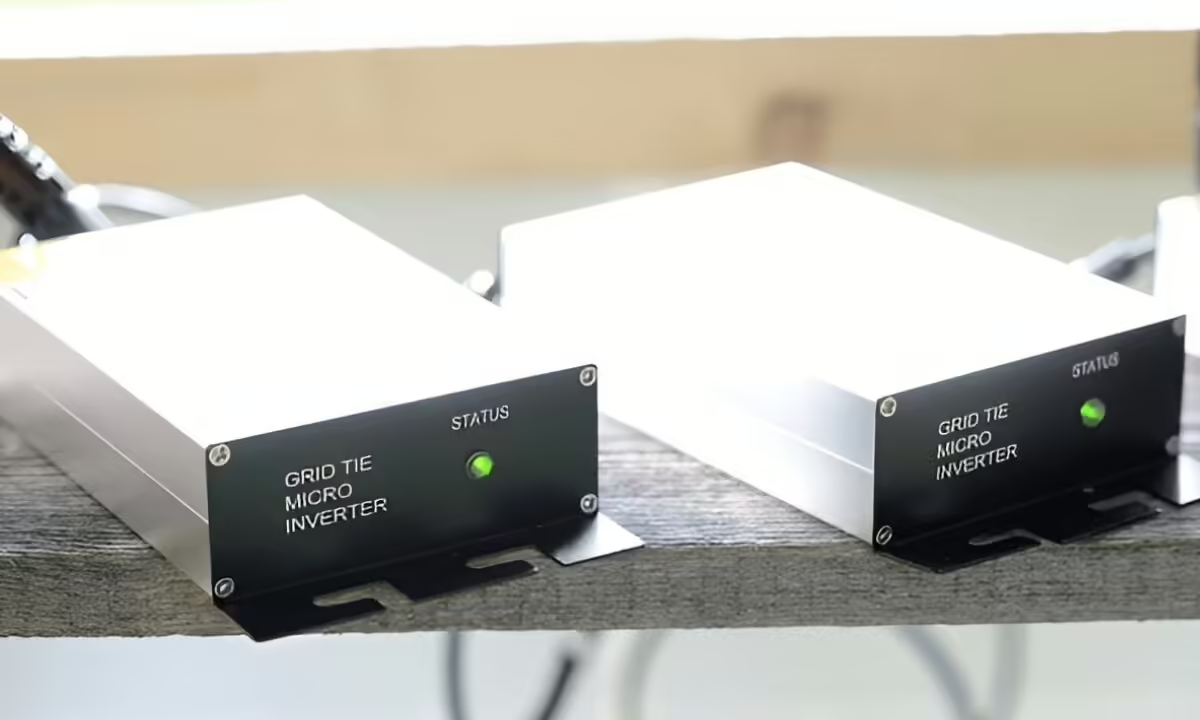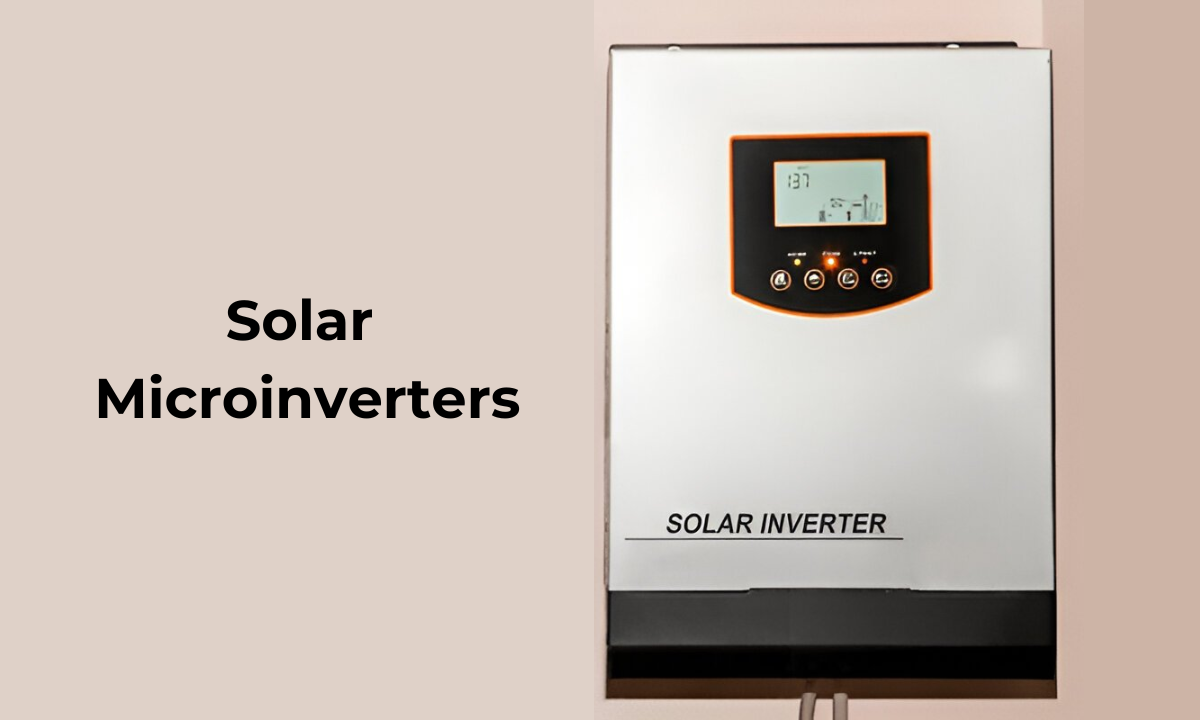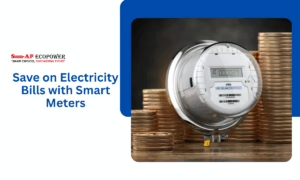Solar energy is revolutionizing the way we power our homes and businesses, offering a renewable and sustainable alternative to traditional energy sources. At the heart of solar power systems are devices that convert solar energy into usable electricity. One such device is the solar microinverter, a critical component that plays a vital role in optimizing the performance and efficiency of solar panels.
This blog delves into the workings of solar microinverters, their significance, and the difference they make compared to other technologies, such as string inverters. We will also explore the role of advanced systems like DEYE solar inverters, shedding light on how they contribute to enhanced energy production.
What Are Solar Microinverters?

Solar microinverters are small, compact devices attached to individual solar panels. Their primary function is to convert direct current (DC) electricity produced by the solar panels into alternating current (AC) electricity, which is then used to power appliances in homes or fed into the electrical grid. Unlike traditional string inverters, where multiple solar panels are connected to a single inverter, microinverters work on a per-panel basis. This means each solar panel in a system is paired with its microinverter.
How Do Solar Microinverters Work?
The process of converting sunlight into usable electricity begins with the solar panel absorbing photons from sunlight. This energy excites electrons in the photovoltaic cells, generating direct current (DC). However, homes and most electrical grids run on alternating current (AC), so this DC electricity must be converted. This is where solar microinverters come into play. Each microinverter converts the DC output from its corresponding solar panel into AC electricity, ensuring that the energy can be utilized immediately or stored for future use.
This decentralization allows microinverters to bypass some common problems that arise in traditional string inverter systems. For example, shading, dirt, or a fault on one panel won’t affect the output of other panels when using microinverters, whereas, in string inverter systems, the performance of the entire array can be impacted by such issues.
Advantages of Using Solar Microinverters
a) Improved Energy Harvesting
One of the key benefits of using solar microinverters is the ability to maximize energy output. Since each solar panel operates independently, the performance of one panel does not impact the others. This means that even if one panel is shaded, dirty, or underperforming, the rest of the system will still operate at full efficiency. In a traditional string inverter system, the output of the entire string is reduced to the level of the least-performing panel.
b) Greater Flexibility
Microinverters offer greater flexibility in system design. They allow panels to be installed in different orientations and at different tilt angles, without the need for uniformity across the entire array. This is particularly useful for roofs that have irregular shapes or face multiple directions.
c) Easier Troubleshooting and Maintenance
Microinverters simplify troubleshooting and maintenance. Since each panel has its inverter, system owners and technicians can easily identify and isolate problems with a specific panel and its associated microinverter. This makes repairs and maintenance more efficient and less costly.
d) Enhanced Safety
Solar microinverters are considered safer than string inverters because they convert DC to AC at the panel level. This eliminates the need for high-voltage DC wiring across the rooftop, reducing the risk of electrical fires.
Differences Between Solar Microinverters and String Inverters
While both microinverters and string inverters perform the essential task of converting DC to AC electricity, there are significant differences between the two. A string inverter system connects multiple solar panels in a series, and the combined DC output is converted to AC by a single inverter. This makes string inverters more affordable but can lead to inefficiencies.
If one panel in a string inverter system is shaded or damaged, the performance of the entire string is reduced. In contrast, solar microinverters eliminate this issue, allowing each panel to perform optimally without being affected by the others. However, microinverters are generally more expensive than string inverters, which is something to consider when planning a solar installation.
The Role of DEYE Solar Inverters in Modern Solar Systems
DEYE solar inverters are an example of advanced technology that enhances the efficiency and reliability of solar energy systems. These inverters are designed to optimize the performance of solar installations by offering features like smart monitoring, enhanced durability, and improved energy conversion rates.
a) Innovative Technology
DEYE solar inverters employ cutting-edge technology to ensure optimal energy conversion. Their advanced algorithms continuously monitor the performance of each solar panel and adjust conversion parameters in real-time to maximize energy output. This results in higher overall efficiency compared to traditional inverters.
b) Durability and Reliability
Built to withstand harsh environmental conditions, DEYE solar inverters offer long-term durability, ensuring that your solar energy system continues to perform efficiently even in extreme weather. This reliability is especially important for homeowners and businesses that rely on solar energy as their primary power source.
c) Monitoring and Control
DEYE solar inverters come with smart monitoring features that allow users to track the performance of their solar system remotely. This enables real-time insights into energy production, system efficiency, and potential issues, allowing for quick intervention if something goes wrong.
Why Solar Microinverters Matter for Energy Transition
As the world shifts towards renewable energy sources, the efficiency and reliability of solar power systems are more critical than ever. Solar microinverters play a crucial role in this transition by maximizing energy output, reducing system downtime, and offering greater flexibility in solar panel installations. They are especially important in residential and commercial solar systems where shading, different roof angles, or partial system failures could drastically reduce the overall performance of the solar array.
a) Optimizing for Smaller Installations
Microinverters are particularly well-suited for smaller solar installations, such as those on residential rooftops. Since these systems often encounter partial shading or have panels installed in different orientations, the ability of microinverters to manage each panel individually ensures optimal performance.
b) Future-Proofing Solar Installations
As solar technology continues to evolve, microinverters offer a future-proof solution. They can easily integrate with new solar panel technologies, battery storage systems, and even electric vehicle (EV) charging systems. This makes them a versatile and scalable option for homeowners and businesses looking to expand their solar capabilities over time.
Conclusion
Solar microinverters represent a significant advancement in solar energy technology. By converting DC to AC at the panel level, they offer numerous advantages over traditional string inverters, including increased energy production, greater flexibility, easier maintenance, and enhanced safety. Moreover, the introduction of advanced systems like DEYE solar inverters adds another layer of efficiency and reliability to solar energy systems, making them more attractive to both residential and commercial users.
As the world continues to embrace renewable energy, the role of solar microinverters will become even more critical, ensuring that solar power systems are as efficient, safe, and adaptable as possible. Whether you’re considering installing a new solar array or upgrading an existing system, investing in microinverter technology is a wise choice that promises long-term benefits.
Sun-AP Ecopower has been characterized by innovations within renewable energy solutions. The effectiveness and reliability will be aimed at tapping into better performance in harnessing solar energy in homes and enterprises.




